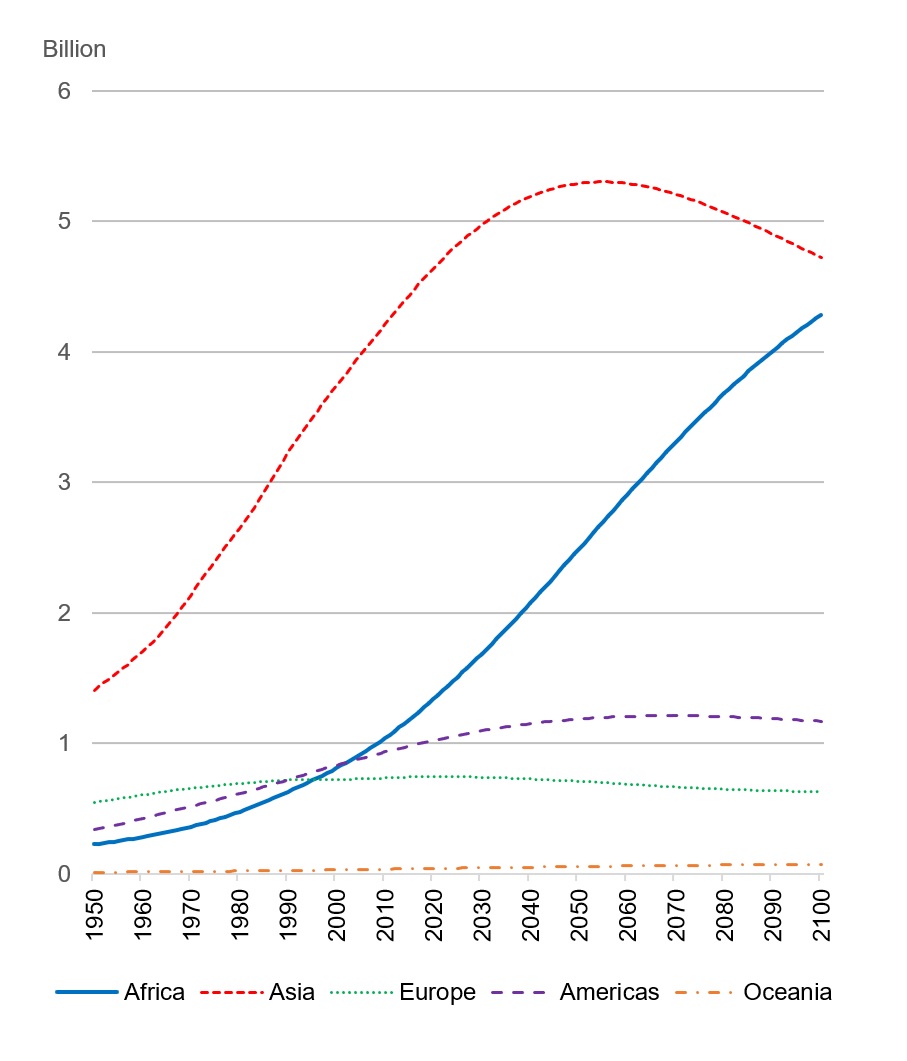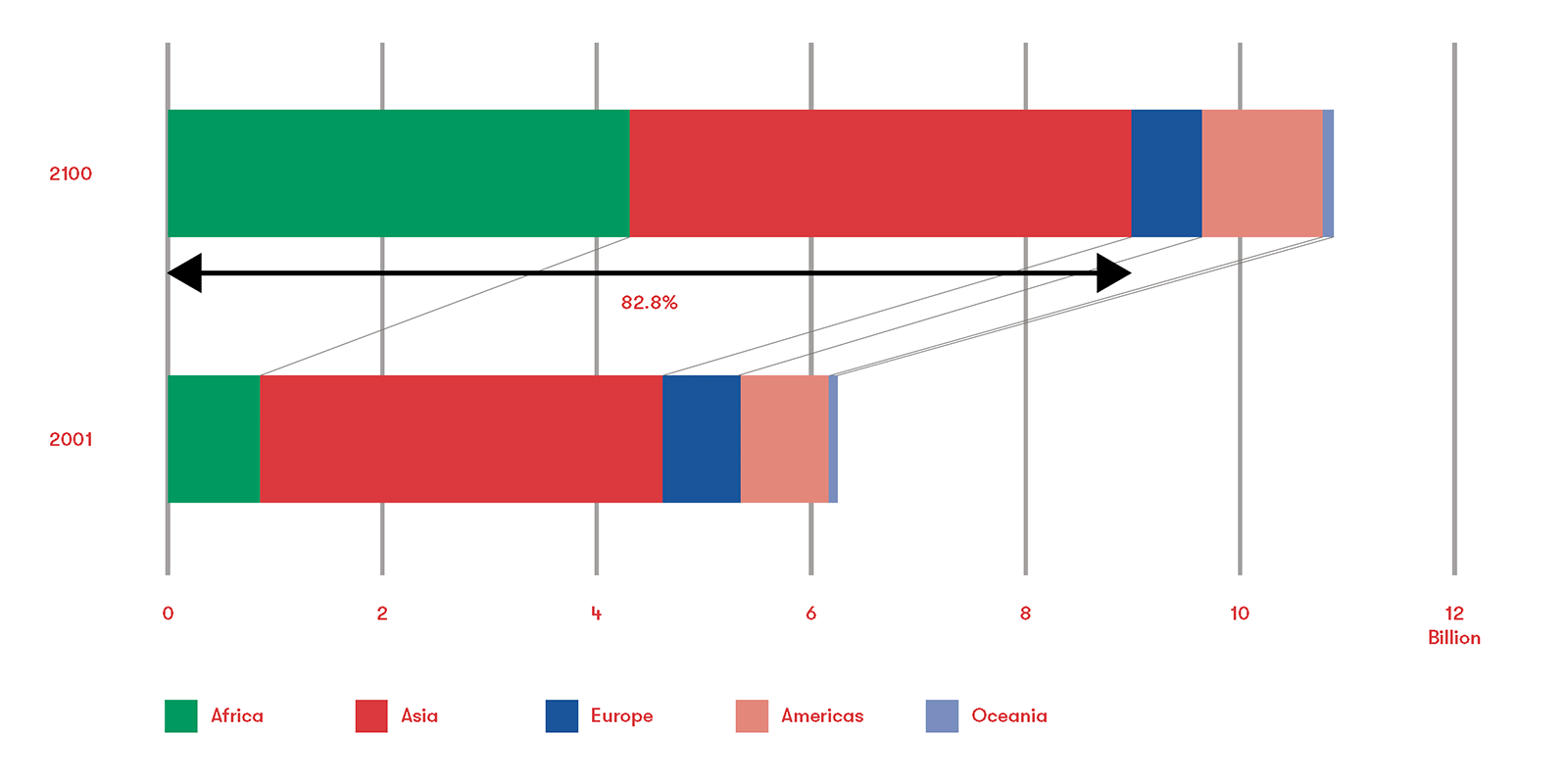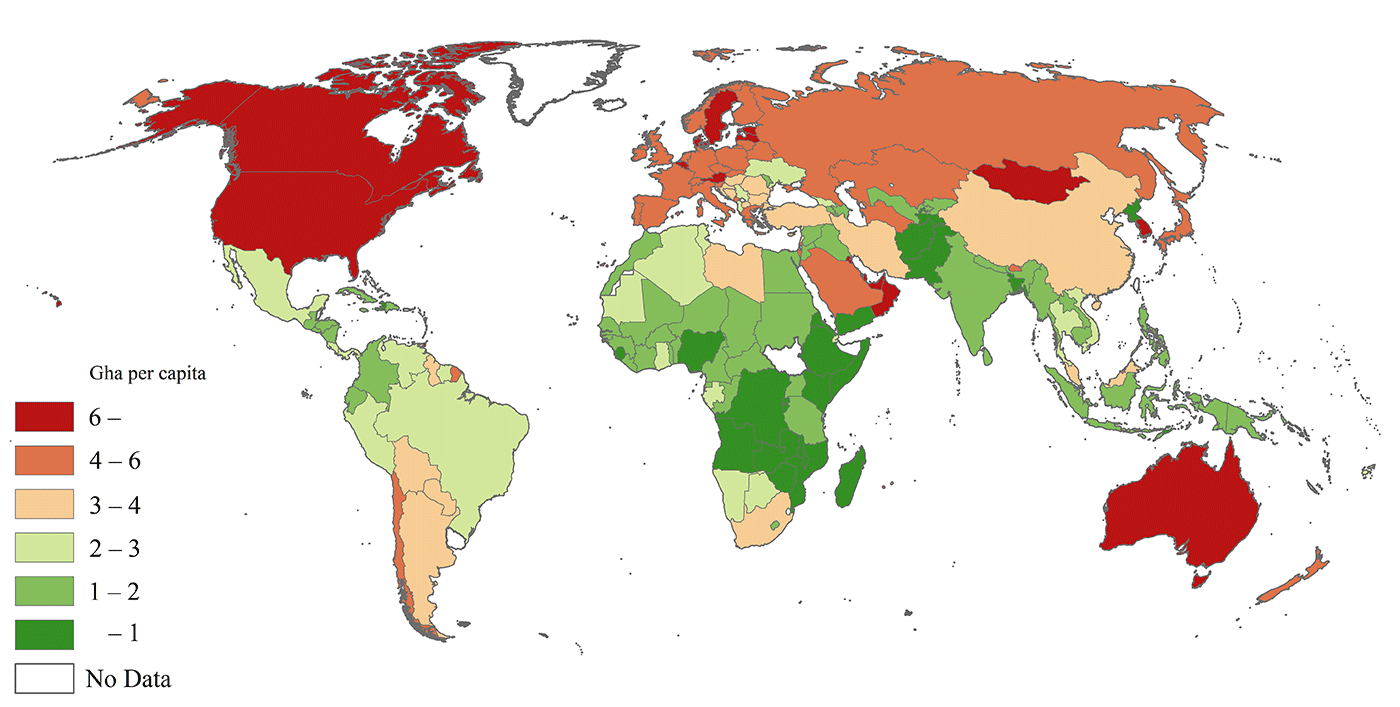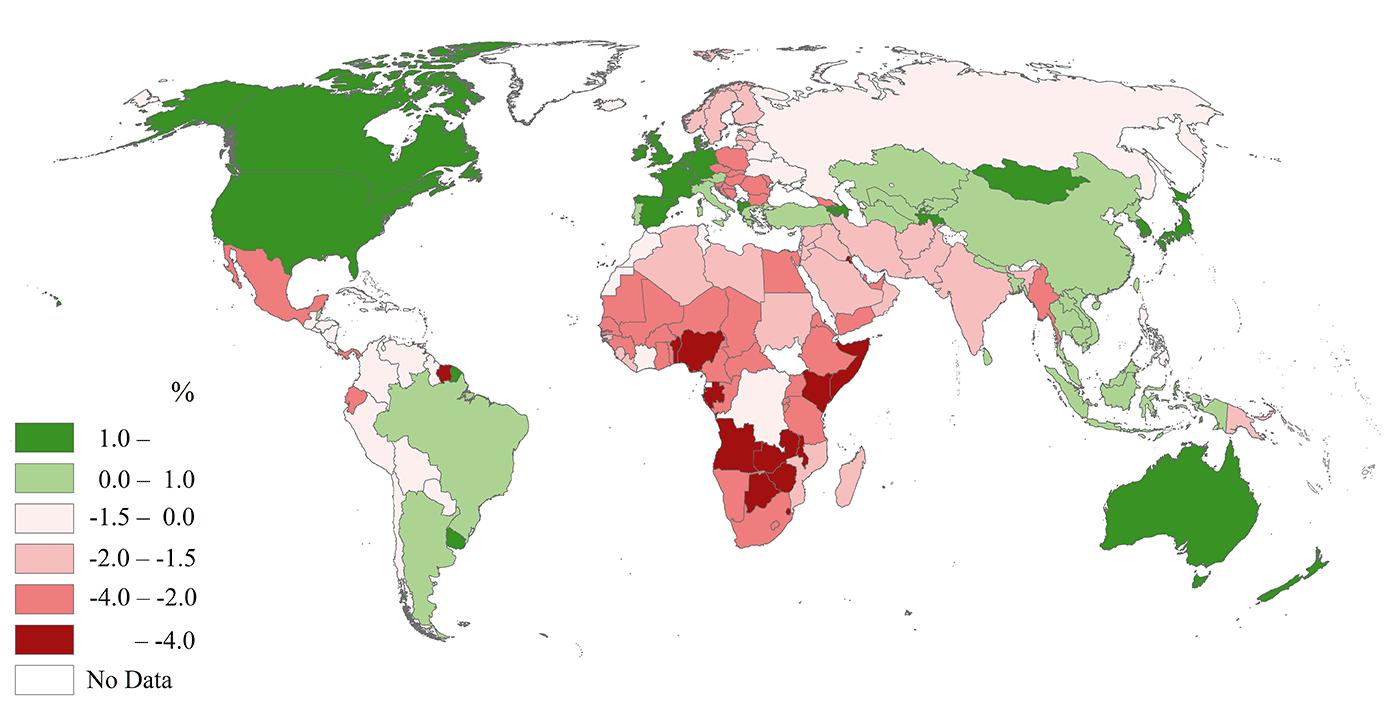Afrasia: An Emerging Macro-Region
One might assume that those engaged in African studies are typically African, European, or American. However, such an assumption does not reflect reality. Looking at East Asia, the Japan Association for African Studies has nearly 1000 members. The majority are Japanese who carry out ethnographic fieldwork in Africa at the level of local villages. African studies have also developed remarkably in China, India, and South Korea, each in its own way.
Asia and Africa as a single unit
I visited Africa for the first time in 1989 to take part in an NGO mission to observe Namibia’s independence elections. Flying with Malaysia Airlines, I approached the African continent with stopovers in Mauritius and Madagascar. On the way back, as the airplane from Kuala Lumpur to Tokyo did not fly as scheduled, the airlines offered the passengers sightseeing in Melaka, where merchants from Portugal, the Netherlands, West Asia, China, and the Ryukyus roamed around centuries ago.
Over the 30 years that have passed since then, I have enjoyed sojourns in Beijing, Hong Kong, Singapore, Penang, Bangkok, Delhi, Dubai, and Istanbul in transit to African cities. As travelling via Europe is an expensive, time-consuming detour, one needs to go via an Asian city to travel from Japan to Africa. I naturally got into the habit of thinking of Asia and Africa in combination.
What if we were to envision Africa and Asia as one large region? Using NASA satellite imagery, I created an image that centres on what ancient Greek sailors called the Erythraean Sea [Fig. 1]. In the first volume of A Study of History, Arnold Toynbee gave the term Afrasia to the steppe belt stretching from West Asia to North Africa, a part of the cradles of civilisations. 1 Historians today call the western part of the Indian Ocean, where the cosmopolitan Swahili civilisation flourished, the Afrasian Sea. 2 I define Afrasia more broadly, following the terminology of Ali Mazrui and Seifudein Adem, as a macro-region that embraces both the African and Asian continents plus their surrounding islands. 3

Fig. 2: Global Population Change by Region, 1950-2100. (Figure by the author, based on World Population Prospects: The 2019 Revision).
Let us take a macroscopic, futuristic view. People living in this broader Afrasia will make up the overwhelming majority of the world’s population by the end of the 21st century. This trend is confirmed by long-term projections of demographic change by world region [Fig. 2]. 4 The population of Asia is projected to plateau around 2050 and gradually decline in the second half of this century, while the population of Africa is expected to increase five-fold throughout the century due to relatively high fertility rates and improvements in health conditions in the region. We can get an idea of the magnitude of the change by looking at the population distribution at the starting and ending points of the 100-year time span: in 2100, Asians and Africans will each account for around 40 percent of the world’s population, thereby representing more than 80 percent of the total in combination [Fig. 3].

Fig. 3: Afrasia’s Share in the World’s Population. (Figure by the author, based on World Population Prospects: The 2019 Revision).
The combined area of Asian nations is roughly equal to the combined area of African nations. Therefore, given that the population sizes of the two regions will be on a par by the beginning of the 22nd century, the population densities of the two regions will also become almost equal. In terms of the social landscape, Africa’s future may look like India’s present. 5
If demographers adopt different assumptions, the resulting figures may change significantly. However, recent research conducted by The Lancet has also reached similar conclusions about the distribution of the world’s population in 2100. 6 The future shape of the planet will be contoured by the dialogue that the peoples of Africa and Asia, the big twins, will organise.
History matters
The Japanese scholar of Middle Eastern studies Itagaki Yuzo once proposed the idea of ‘n-region’. The variable ‘n’ can be any countable number, and individuals can freely conceive and choose different regions, or spheres/spaces in which human activities are embedded, based on their multiple identities. One may belong to various regions at diverse levels, from a village, a network of individuals, a nation, or a group of nations to the globe at the same time. While a region can be politically constructed, it may also be a religious community without specific geographical boundaries or a group of people who share certain secular values. In fact, a region may be a historical imaginary that exists only in the memory of an individual. 7
With different motivations, people have already discussed a number of other macro-regions combining two internally diverse regions: Eurasia, Eurafrica, Eurabia, Afrabia, Chinafrique, etc. The Americas is another macro-region that is distinguishable from the rest of the world. So, what is the rationale for uniting Africa and Asia? Does it have any impact on the configuration of smaller regions or on the individual’s worldview?
In my understanding, the raison d’être of Afrasia is chiefly a historical one. Most of the peoples of Africa and Asia share a common experience of being colonised by the West. When the Latin American nations gained their independence in the early 19th century, Europe began to colonise Africa and Asia just like a parasite changes its host. 8 The delegates of Afrasian independent states gathered in Bandung in 1955 to form the Non-Aligned Movement that distanced itself from both the United States and the Soviet Union. In the 21st century, the Bandung frame is being revitalised as the heads of Afrasian nations assemble again in Indonesia. The second Bandung Conference of 106 states was organised in 2005, and the third of 109 states took place in 2015. The group of Bandung is growing into the largest regional organisation, even though it has no permanent secretariat.
The network of Afrasian nations is expected to have a significant impact on tumultuous world geopolitics in the current era of violent rupture in the eastern part of Europe. As Afrasians come to form much of the world’s population, the way of decision-making in international organisations, including the United Nations system, will have to undergo major changes. This is not because democracy means majority rule but because everyone is equal in rights and dignity. If 80 percent of the population is alienated from decision-making, it will be exactly like apartheid South Africa on a global scale.
Toward a benign community
Like it or not, the Afrasian people will make up the vast majority of the world’s population. However, such a discourse requires two caveats. First, one should not confuse Afrasianism with a crude anti-Western mindset. The era of political colonialism by the West is already gone. And yet the formerly colonised nations should know the pain of being ruled by others. Major Asian nations such as China, Japan, and India should not behave as the West did in the past. All Afrasian peoples must share and internalise the norm against hegemonic behaviours within the region.
Second, the population growth in Africa in the 21st century will not be a part of an endless population explosion. While there is no doubt that Africa’s population will increase dramatically, the rate of expansion is expected to slow down and then come to a halt. Childbirth decreases everywhere as urbanisation progresses and as women’s economic participation increases. Even in Africa, the total fertility rate (the average number of children a woman is statistically expected to have) peaked in the late 1960s and started to decline sharply in the 1990s [Fig. 4]. The world in the 22nd century, therefore, may be entering a stationary state in terms of the reproduction of the population.

Fig. 4: Projection of Fertility Change by Region, 1950-2100. (Figure by the author, based on World Population Prospects: The 2019 Revision).
While these projections assume that fertility rates worldwide will converge to the replacement level (slightly more than two), those figures may eventually fall and remain below two in all parts of the world, as is already the case in Europe and East Asia today. In the distant future, human society may shrink further and return to a sort of hunter-gatherer society, where people might break into bands, carry wearable devices, and lead mobile lives.

Fig. 5: Ecological Footprint (Consumption), 2017 (Figure by Yasumoto Shin’ya and Kawamura Shin’ya).
Many things concern us when we think of the near future of Afrasia. Let us pick up just one of them. The ecological footprint per capita is an indicator of the amount of natural resources consumed by human beings. When it is presented on a world map, we can see that the people of Afrasia do not cause much damage to the nature of the globe [Fig. 5]. However, considering the expected impacts of climate change on the production of wheat, rice, and maize (the percentage change between the 1970-2000 baseline and 2080), tropical Afrasia will suffer a big loss [Fig. 6]. 9 It is morally unacceptable that the region that has been relatively friendly to the planet should be the one to bear the brunt of global environmental destruction.

Fig. 6: Effects of Climate Change on Crop Production (B2A), 1970–2000 (Baseline) and 2080 (Figure by Yasumoto Shin’ya and Kawamura Shin’ya).
Cultural triangulation
Afrasia is the largest variant of ‘n-region’ imaginable on the globe. Let us zoom out and look at the world map. And then let us zoom in on the level of towns, villages, networks of individuals, and even an individual person. The framing of a macro-region may influence our approach when conducting fieldwork in specific locations.
The cultural anthropologist Kawada Junzo advocated a method of cultural triangulation. If the locations of two points are given, and the angles from these points to the third point are known, then the location of the third point can be accurately determined. Kawada wrote about oral communication in a village of Burkina Faso, West Africa, using the European and Japanese literary classics as his major reference points. 10
Currently, my students are writing theses on foreign exchange policies in Indonesia and Nigeria, hospitality and tourism in Cape Verde and Japanese islands, and agricultural cooperatives in Zimbabwe and East Asian countries. Rather than using one as a model for the other, they attempt to make reciprocal comparisons. In envisioning the world of the 22nd century, it will be critically important to organise a heuristic dialogue between Africa and Asia, the twin components of Afrasia. If you apply the method of cultural triangulation and compare two villages in Afrasia, you may clearly see the place where you are now standing, wherever you are.
MINE Yoichi is Professor at the Graduate School of Global Studies, Doshisha University, Kyoto, Japan. His English works include Migration and Agency: Afro-Asian Encounters (Palgrave, 2018, co-edited with Scarlett Cornelissen). Email: ymine@mail.doshisha.ac.jp
The discussion in this article is based on Yoichi Mine, Connecting Africa and Asia: Afrasia As a Benign Community (Routledge, 2022). This is an Open Access book downloadable at: https://www.taylorfrancis.com/books/oa-mono/10.4324/9781003229261/connecting-africa-asia-yoichi-mine